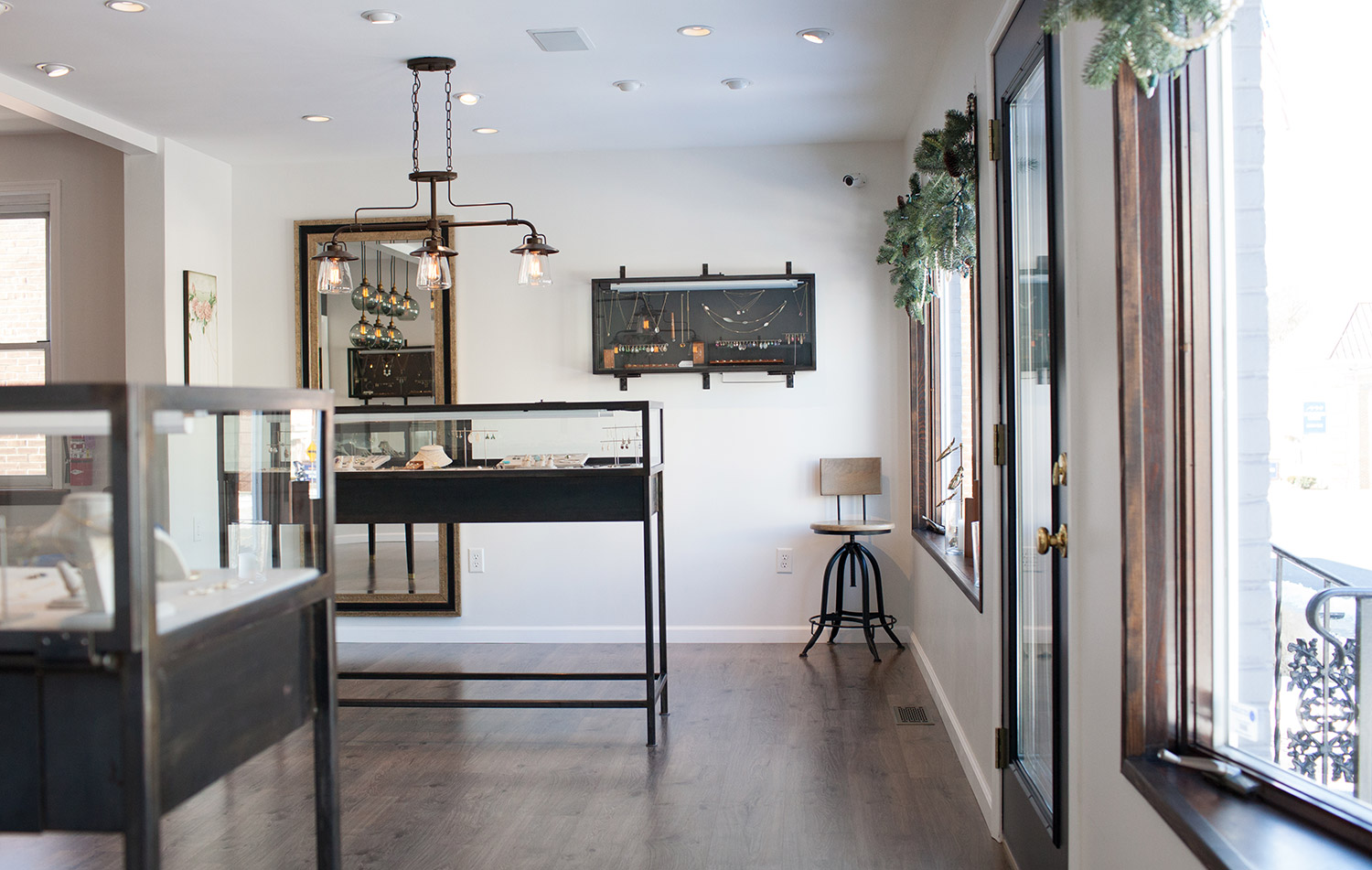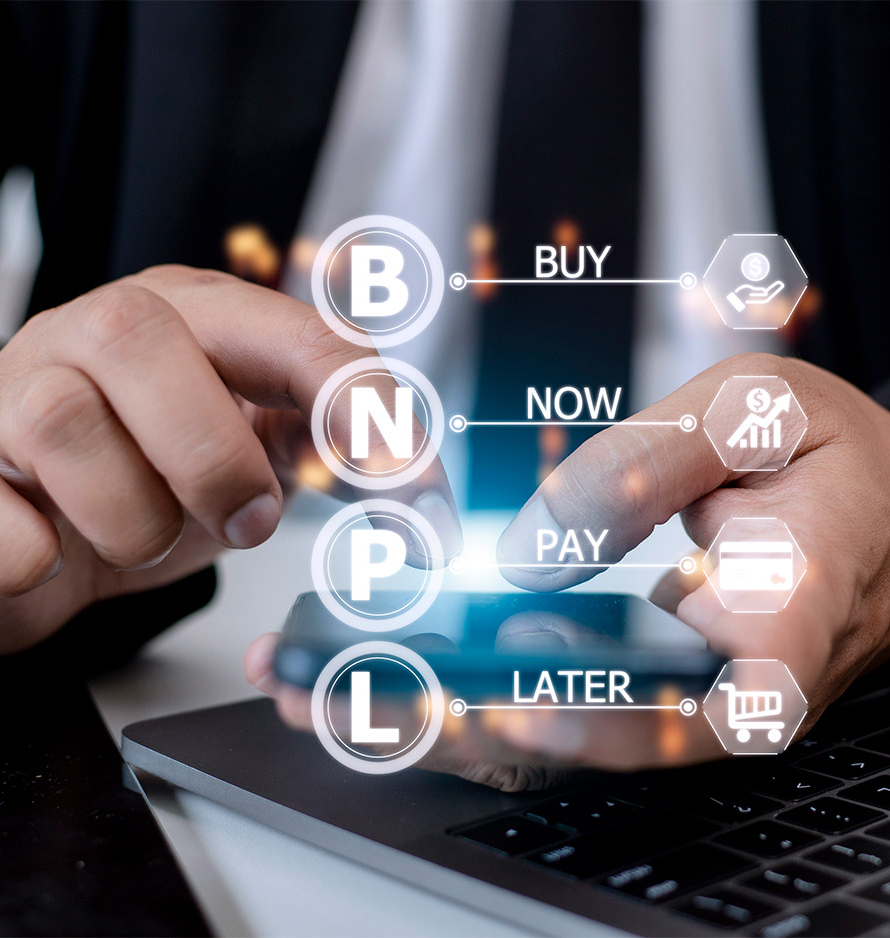What you need to know about Buy Now, Pay Later—the payment trend taking retail by storm
Buy now, pay later, generally abbreviated to BNPL, is a burgeoning trend in retail payment. Billed as an alternative to cash or credit cards, this form of financing aims to give customers flexibility by letting them pay for purchases over time, without the high interest rates many credit cards charge.
The pitch is proving popular with inflation-strapped consumers. Adobe Analytics reported that from Thanksgiving through the following Cyber Monday, BNPL purchases jumped by a whopping 85% compared with the week prior.
If you’re considering offering BNPL as a payment option, here’s what you need to know.

What is it, anyway?
Today’s pay-later programs are most often compared to the layaway plans common in earlier, pre–credit card generations. The big difference that makes BNPL appealing to a customer base used to instant gratification: While buyers still make a set of fixed installment payments, they get their merchandise before—not after—paying off the entire amount. Often, they won’t incur any interest or fees if they agree to pay off their purchase in a series of payments, usually four payments on a biweekly basis.
Shoppers, especially young shoppers, don’t view BNPL as negative because they perceive it as “free” money, according to marketing experts. “It started as an appeal to Gen Z and younger consumers who have this preconceived notion of credit cards as negative,” says Anastasiya Ghosh, a marketing professor at the University of Arizona.

Retailers who use these platforms agree. “It helps close the sale, which is great,” says Elizabeth Gibson, founder and CEO of Austin, Texas–based Eliza Page, who says her store has been using the BNPL provider Affirm for a few years.
Gibson adds that the sales processed through BNPL seem to be incremental, rather than cannibalizing credit card purchases. “When a customer sees it on your website, it lowers the barrier to entry,” she says. “If they don’t have $5,000 at that moment, they feel like ‘I can afford this.’”
How does it work?
Companies offering BNPL loans are generally fintechs—that is, financial technology companies that perform bank-like functions without actually being banks. Similar to how you might contract with a credit card payment processor—either a traditional bank or a startup like Square (whose corporate parent, Block, acquired BNPL company Afterpay last year)—you can work with one or more BNPL platforms to give customers the option to split up the cost of their spending and pay over time. Your customers see the option to pay with BNPL when they initiate the checkout process.
Another appeal of BNPL versus traditional financing is easy access. For most shoppers, getting approved for a BNPL account is faster than applying for a credit card, since it doesn’t involve an in-depth evaluation—a “hard pull”—of their credit report. Shoppers who already have an account with the BNPL provider can make a purchase as quickly as with a credit card.
The flagship offering of BNPL companies is interest-free financing that is paid off in four equal installments on a biweekly basis. In addition to their basic short-term, no-interest loan offering, a growing number of BNPL providers have begun to also offer customer financing using a model that looks more like a traditional installment loan, with the borrower agreeing to pay a preset amount of principal as well as interest each month.
Although it might seem redundant, some retailers who use BNPL say it’s helpful to offer more than one option because customers generally have preferred platforms on which they’ve created an account, making checkout quick and seamless.

How much does it cost?
Like credit card processing arrangements, the payment platform takes a percentage of the purchase price. Some may also charge the merchant a nominal per-transaction processing fee or a monthly account fee akin to a bank account maintenance fee if a minimum threshold of spending isn’t met. (One BNPL platform, Sezzle, charges $15 per month if monthly transactions are below $300.)
The percentage charged by the BNPL processor is contingent upon a number of variables: the company’s own policies, how much of your transaction volume the company believes it can reasonably capture, and the type of payment arrangement you want to offer your customers.
Overall, the transaction fees are comparable to those charged by credit card processing networks, with most falling in the 2% to 7% range. They can be higher if you choose to offer customers the opportunity to finance their purchases over a longer term—say, 12 months versus two months.
Are there any caveats?

Because it falls outside the oversight of other types of consumer debt like credit cards and personal loans, the BNPL industry at present operates in a regulatory gray zone. Some observers—including government regulators—have expressed concern about payment platforms that encourage people to take on debt in any form for discretionary purchases.
“BNPL is still accumulating debt,” Ghosh says. “It just feels different because it segregates the payments.”
Ghosh says younger shoppers prefer the BNPL model to credit cards, which can have borrowers making interest payments for years if they only pay the monthly minimum. Instead, the BNPL installment loan schedule is designed so buyers have a fixed end date by which they complete payment for their purchase. If a buyer misses a payment, there can be fees—generally $10 or less—or other financial penalties assessed, or the platform might prohibit any new purchases until the account is brought back into good standing.
Companies providing pay-later loans use sophisticated credit modeling software to manage their exposure to risk. In practice, this means they limit the dollar amount of transactions they will process through their networks—which can be a headache for jewelers selling high-priced items. If you’re considering adding BNPL to your customer payment options, have a conversation with a company representative to ensure that its transaction limits are suitable for your price points.
Another consideration is that, unlike credit cards that can be used online and in-store, BNPL is generally thought of as wholly for e-commerce transactions. That said, retailers can create a workaround if they want to offer BNPL for in-store purchases by routing the transaction through their website or the BNPL provider’s mobile app on the customer’s phone.

What are the benefits?
“I’m personally an online shopper, and I appreciate the flexible payment options,” says Alexis Padis, president of San Francisco–based Padis Jewelry. “It really allows an opportunity to fit unique budgets and cash flows.”
Padis says her site has offered BNPL via Sezzle for about a year, and she plans to add Klarna, another BNPL platform, in the near future. “Any kind of offering where you can break up the payments without any additional interest is really appealing to clients,” she says.

The growing ubiquity of BNPL among big-box stores and mall brands puts a kind of peer pressure on small retailers to follow suit, Ghosh says. “Nowadays, there’s almost an expectation that most large retailers and even smaller ones offer BNPL like they offer credit cards.”
Padis, though, sees a silver lining in providing the same conveniences as larger rivals. “As these fintech companies become more prominent on other websites, if—as an independent retailer—I can offer that same branded experience, it’s a win for everybody.”
A spokeswoman for Afterpay says the platform, which lets users browse retailers from its app, can help independent businesses reach a broader customer base, particularly hard-to-target young adults. “The Gen Z shopper loves to shop small,” she says.
Stores offering BNPL also benefit from being able to outsource the risk and the management of consumer lines of credit. While many jewelers have historically offered their own financing, BNPL makes that process quicker and easier for both stores and customers, according to Monika Krol, owner of Meeka Fine Jewelry in Camp Hill, Pa. “We initially created a layaway system, but it was just a manual process and not very streamlined.”
Krol says she has used Shopify’s BNPL offering, Shop Pay Installments, in the past. She currently uses Bread Financial and is considering adding more BNPL options based on customer responses.
“It’s great from our end,” Krol says. “We accept the order and we ship the piece, and at that point Bread pays us the full amount and they handle the payments from there.”
• • • • •
Meet the Big Players in BNPL
Affirm
Afterpay
Bread Financial
Klarna
PayPal Pay in 4
Sezzle
Shopify Shop Pay Installments
Zip
Top: Getty Images
